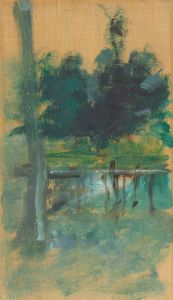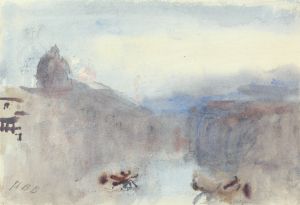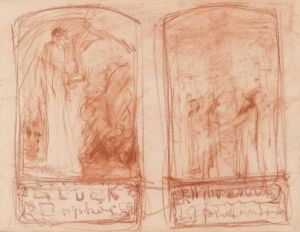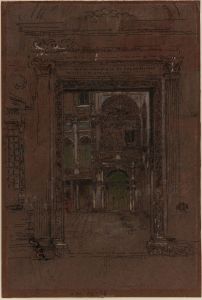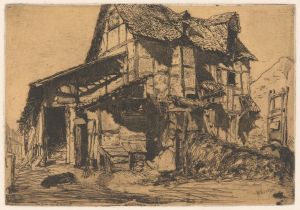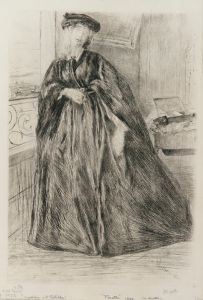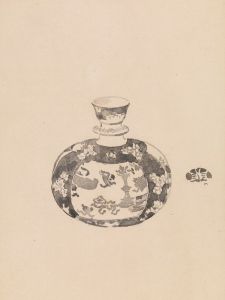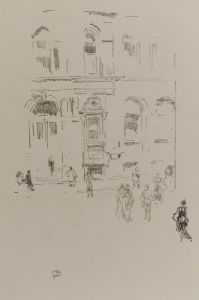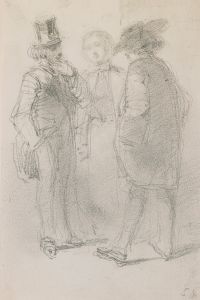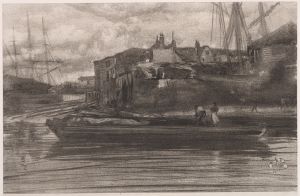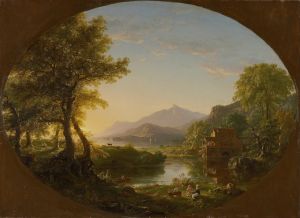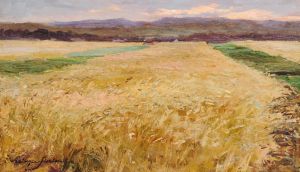
Saverne
A hand-painted replica of James Abbott McNeill Whistler’s masterpiece Saverne, meticulously crafted by professional artists to capture the true essence of the original. Each piece is created with museum-quality canvas and rare mineral pigments, carefully painted by experienced artists with delicate brushstrokes and rich, layered colors to perfectly recreate the texture of the original artwork. Unlike machine-printed reproductions, this hand-painted version brings the painting to life, infused with the artist’s emotions and skill in every stroke. Whether for personal collection or home decoration, it instantly elevates the artistic atmosphere of any space.
James Abbott McNeill Whistler was an American artist known for his significant contributions to the art world during the late 19th century. He was a proponent of the Aesthetic Movement, which emphasized the visual and sensual qualities of art and design over practical or narrative considerations. Whistler's work is characterized by his innovative use of color and his focus on the harmony of composition.
"Saverne" is one of Whistler's lesser-known works, and unfortunately, there is limited information available about this specific painting. Whistler's oeuvre includes a wide range of subjects, from portraits to landscapes, and he often drew inspiration from his travels across Europe. It is possible that "Saverne" depicts a scene from the town of Saverne in the Alsace region of France, a place known for its picturesque landscapes and historical architecture. However, without specific documentation or references, this remains speculative.
Whistler's technique often involved a delicate balance of color and form, and he was known for his ability to capture the essence of a scene with minimal detail. His works frequently exhibit a sense of tranquility and subtlety, achieved through his mastery of tonal harmony. This approach is evident in many of his paintings, where he often employed a limited color palette to create atmospheric effects.
Throughout his career, Whistler was influenced by various artistic movements and styles, including Impressionism and Japanese art, which is evident in his use of space and composition. His famous "Nocturnes" series, for example, showcases his ability to convey mood and atmosphere through the use of muted tones and soft, blurred lines. While "Saverne" is not as widely recognized as some of his other works, it likely reflects Whistler's consistent artistic philosophy and his dedication to the aesthetic experience.
Whistler's impact on the art world extends beyond his paintings. He was also known for his writings and his role in the art community as a controversial and outspoken figure. His famous legal battle with art critic John Ruskin, known as the "Whistler v. Ruskin" trial, highlighted his belief in the artist's right to create without the constraints of public opinion or traditional expectations.
In summary, while specific details about "Saverne" by James Abbott McNeill Whistler are scarce, it can be appreciated within the broader context of Whistler's artistic legacy. His work continues to be celebrated for its beauty, innovation, and influence on future generations of artists. Whistler's dedication to the principles of the Aesthetic Movement and his unique approach to composition and color remain significant contributions to the history of art.






